How Does E-Commerce Pricing Intelligence Help to Compare Amazon, Flipkart, And Myntra Shipping Costs?
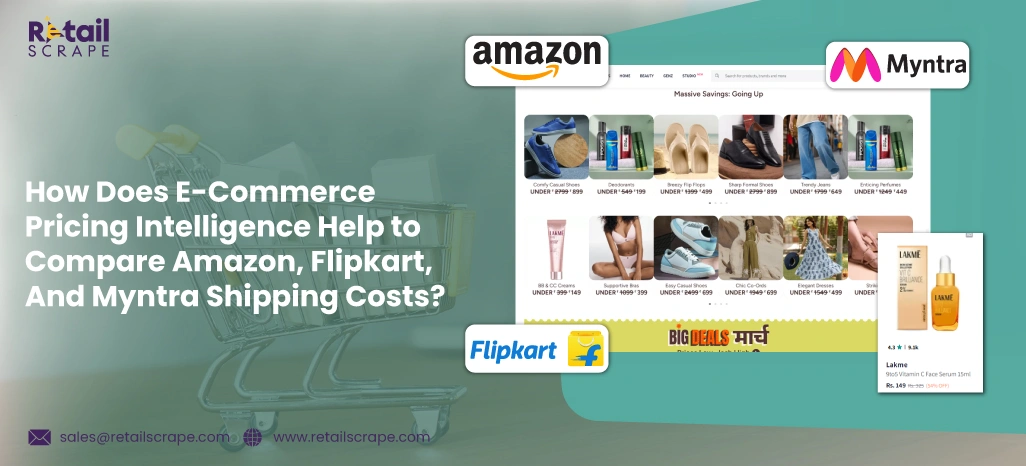
Introduction
In today’s fast-paced digital retail environment, shipping costs significantly influence both customer purchase choices and seller profitability. A buyer’s decision to shop on Amazon, Flipkart, or Myntra is often shaped not only by product pricing but also by the delivery charges applied. For businesses operating across multiple marketplaces, having accurate, real-time insights into these expenses is vital for identifying potential areas of optimization.
Implementing a data-driven approach has become essential for monitoring such variations. By integrating E-Commerce Pricing Intelligence within a robust analytics framework, businesses can track cost fluctuations, assess competitor tactics, and optimize delivery pricing models, leading to improved profitability and stronger customer satisfaction.
Understanding the Role of Data in Shipping Cost Comparison
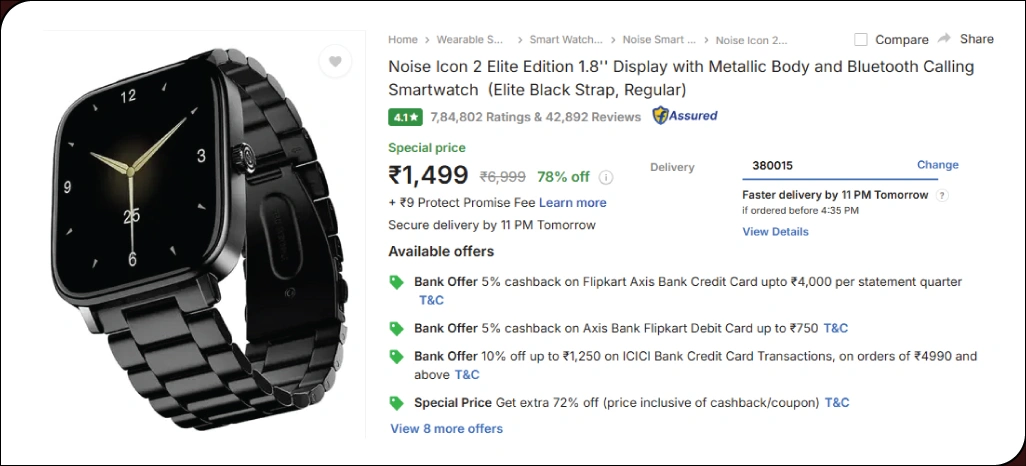
Shipping cost structures on Amazon, Flipkart, and Myntra vary depending on multiple factors such as order value, geographical location, delivery speed, and seller category. While Amazon offers tier-based delivery benefits for Prime members, Flipkart and Myntra follow hybrid models with free-shipping thresholds and occasional dynamic surcharges.
Accurate insights are driven by Pricing Intelligence Data Scraping, which systematically gathers and analyzes shipping rate patterns over time. This data highlights cost fluctuations during peak seasons, regional variations, and promotional delivery offers, allowing sellers to optimize their delivery strategies proactively.
Key highlights include:
- Identifying seasonal spikes in delivery rates and preparing pricing strategies accordingly.
- Detecting regional delivery cost differences to adjust product listings.
- Comparing promotional delivery benefits across marketplaces for competitive positioning.
The Competitive Impact of Delivery Pricing on Marketplace Sales
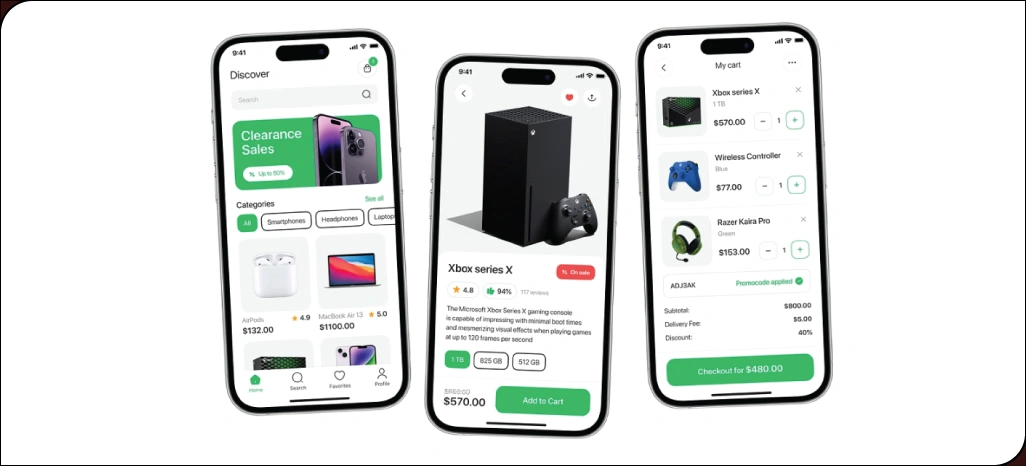
Delivery costs are a decisive factor in online buying behavior, with studies showing over 55% of customers abandon carts due to unexpected shipping fees. Retailers who actively compare delivery rates across marketplaces gain a measurable competitive advantage.
Through E-Commerce Delivery Pricing Analytics, sellers can determine if competitors are offering lower shipping costs in specific regions or product categories. For example, Myntra’s weekend free-delivery campaigns can challenge Amazon’s flat-fee approach, while Flipkart might attract high-value customers with targeted free-shipping promotions.
Strategic advantages include:
- Understanding competitor shipping strategies to plan counteroffers.
- Using delivery data to increase conversion rates in competitive segments.
- Pinpointing delivery cost gaps to enhance market positioning.
Breaking Down Marketplace Shipping Cost Models
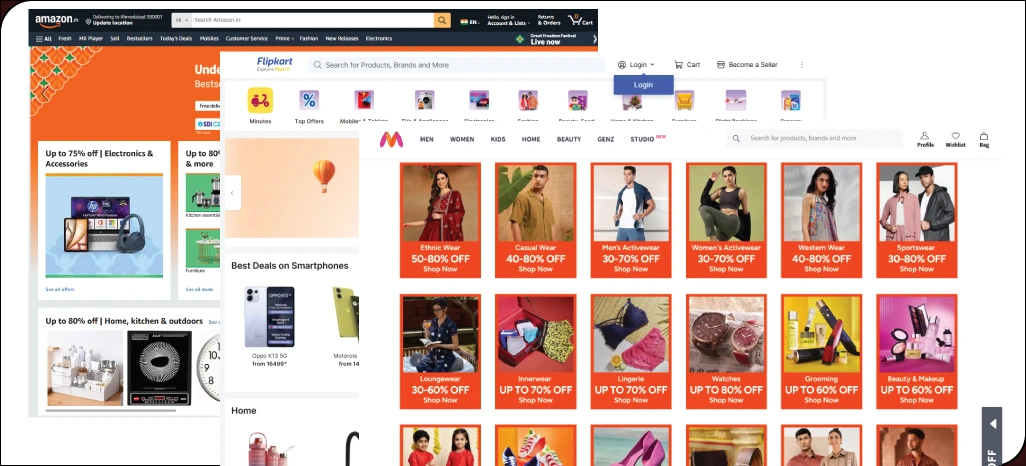
Each e-commerce marketplace follows a unique delivery pricing structure that can directly impact sales performance, customer loyalty, and profitability. By leveraging E-Commerce Pricing Intelligence, businesses can uncover hidden pricing patterns, adapt to competitive shifts, and make data-backed decisions for product listing and promotional strategies.
1. Amazon Shipping Cost Model
Amazon uses a tiered pricing strategy that prioritizes Prime members with exclusive delivery benefits while charging higher rates for non-Prime customers on low-value purchases. Amazon Delivery Pricing Intelligence enables sellers to analyze how these cost structures shift during sales events, regional promotions, or policy updates.
Key points include:
- Prime Membership Benefits: Free or reduced delivery on most products, including priority same-day or one-day delivery in selected areas.
- Non-Prime Delivery Charges: Standard fees are applied for low-value items, influenced by location and category.
- Seasonal Delivery Discounts: Temporary reductions during high-volume sales or festivals.
- Size and Weight Impact: Larger or heavier parcels may carry extra handling fees.
- Expanded Regional Coverage: Increased delivery reach during festive seasons to capture more orders.
2. Flipkart Shipping Cost Model
Flipkart blends free-shipping thresholds with loyalty program advantages to retain customers. Additional charges may apply for remote locations or specific product categories. Flipkart Delivery Pricing Intelligence helps in tracking how these thresholds and fees change over time, allowing sellers to remain price competitive.
Key points include:
- Free Shipping Thresholds: Purchases above a set value often qualify for free delivery.
- Loyalty Rewards: Flipkart Plus members enjoy faster delivery and no shipping fees on many products.
- Remote Area Charges: Higher fees for non-metro or hard-to-reach destinations.
- Category-Specific Offers: Certain product groups receive temporary free shipping benefits.
- Seasonal Promotions: Free delivery or reduced rates during major sales events to boost order volume.
3. Myntra Shipping Cost Model
Myntra’s strategy focuses on promotional delivery pricing, especially for fashion and lifestyle categories. It often runs targeted free-delivery campaigns during weekends or festive events. Myntra Delivery Pricing Intelligence enables businesses to study these offers, compare them against competitors, and adjust their promotional timing accordingly.
Key points include:
- Weekend and Festival Offers: Regular free-shipping promotions to stimulate high sales periods.
- Fashion-Centric Discounts: Strong focus on apparel, footwear, and accessories with reduced delivery costs.
- Insider Member Benefits: The Myntra Insider program offers discounted or free delivery options.
- Purchase Threshold Benefits: Orders above a specific value qualify for free or reduced delivery fees.
- Sale Event Adjustments: Temporary fee waivers or express delivery benefits during significant fashion sales.
Tracking Shipping Costs Over Time for Strategic Advantage
Shipping costs are not static — constant monitoring is essential. Delivery Charge Tracking Solutions help identify when competitors change their delivery fees. For instance, if Amazon lowers its free delivery threshold or Flipkart adds surcharges, businesses can quickly respond.
Pairing these solutions with E-Commerce Delivery Price Scraping delivers a granular view of price shifts for different delivery timelines, order weights, and payment options, enabling businesses to protect margins and enhance customer retention.
Core advantages of ongoing tracking:
- Spotting immediate competitor price changes for fast response.
- Protecting profit margins from sudden cost hikes.
- Maintaining customer satisfaction with competitive delivery offers.
Data Collection Methods for Shipping Price Insights
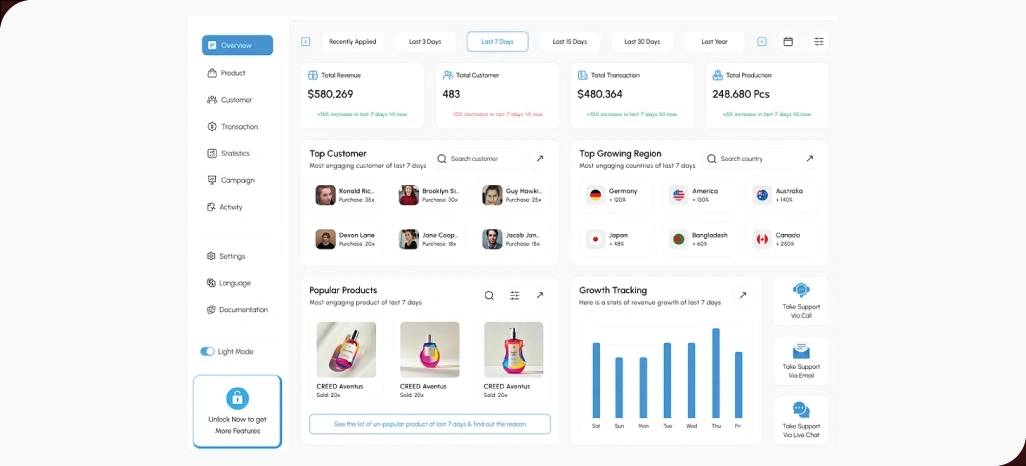
Advanced delivery cost analysis relies on Web Scraping Tools For Shipping Data to capture rates from product listings, checkout stages, and policy pages.
This goes beyond final delivery fees by including context-based elements such as:
- Regional availability of free shipping.
- Standard and express delivery timelines.
- Seasonal or festival-based delivery promotions.
- Additional handling or packaging fees.
When combined with E-Commerce Data Scraping, these insights are consolidated into dashboards for side-by-side cost comparison across Amazon, Flipkart, and Myntra.
Evaluating the Return on Shipping Cost Intelligence
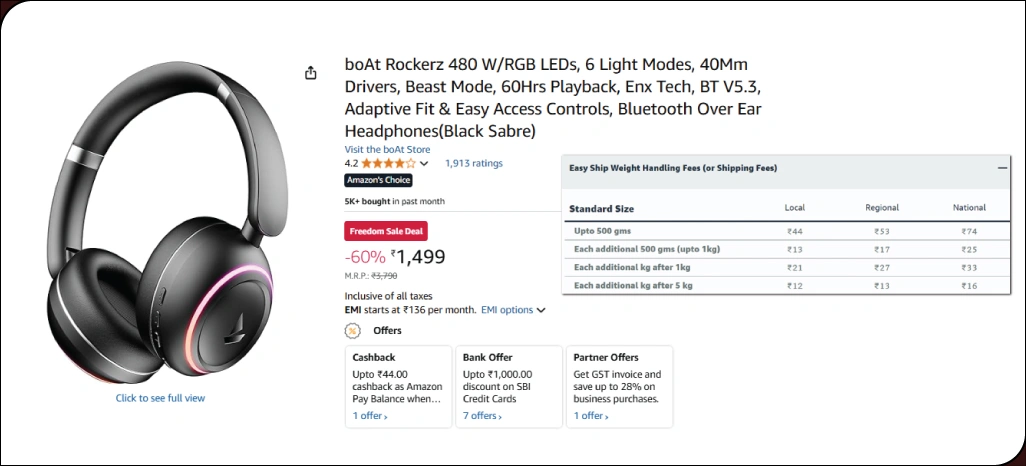
Investing in delivery cost intelligence yields both pricing and operational benefits. Businesses can align campaigns, adjust product strategies, and optimize logistics based on marketplace cost data.
The Benefits Of Amazon Data Scraping extend far beyond price comparison, supporting seasonal delivery planning and fulfillment optimization.
Key ROI drivers include:
- Identifying products at risk of reduced profitability due to shipping costs.
- Timing promotions alongside competitor free-delivery offers.
- Using marketplace cost insights to negotiate better logistics rates.
Shipping Cost Trends During Peak Seasons
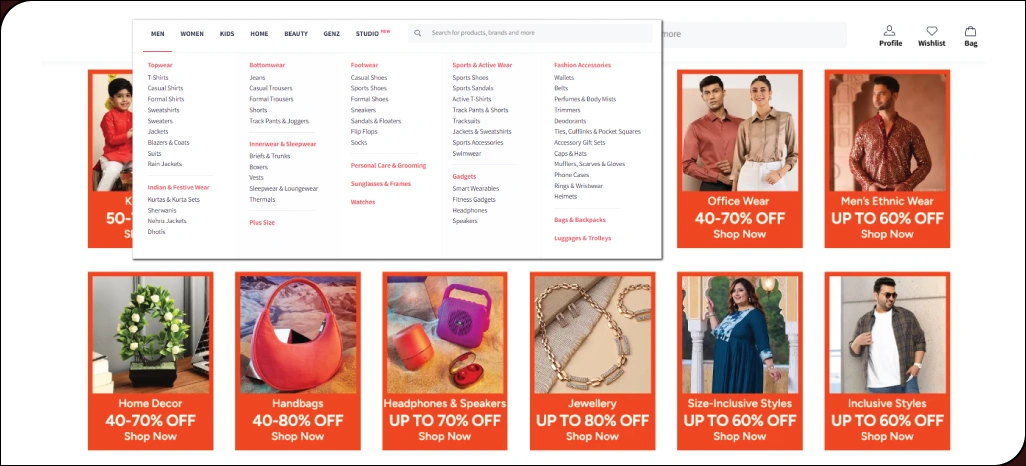
Festivals, flash sales, and seasonal promotions often trigger temporary changes in delivery pricing. Product Data Collection From Amazon, Myntra during these events reveals critical shifts that businesses can use to match or outperform competitor offers.
For example, Myntra may waive delivery fees on select categories during a fashion festival, while Amazon might extend same-day delivery to more areas. Access to both live and historical data provides an advantage in seasonal marketing.
Seasonal tracking benefits include:
- Preparing campaigns that match competitor offers in real time.
- Optimizing product listings for peak season demand.
- Avoiding profit erosion from sudden cost changes.
Web Scraping in Modern E-Commerce Logistics
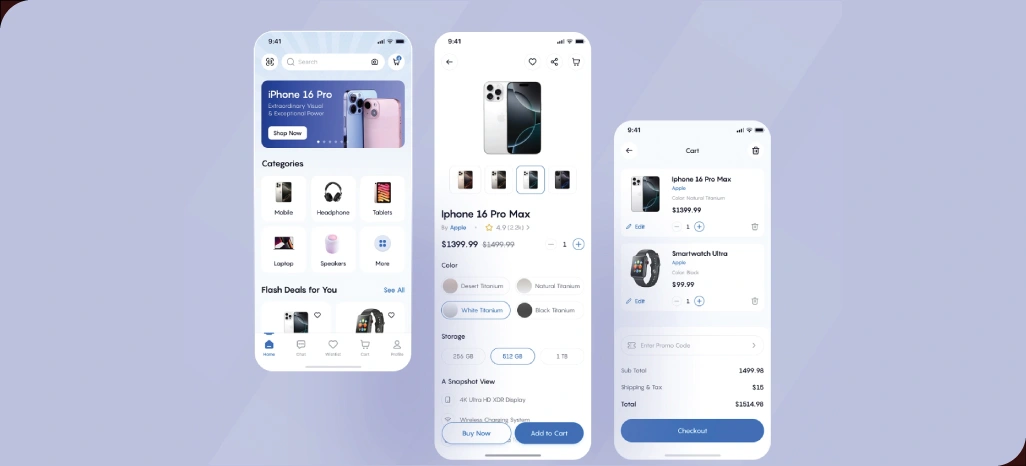
The role of Web Scraping in E-Commerce now extends beyond price monitoring to comprehensive delivery cost intelligence. As competition intensifies, shipping price optimization plays a significant role in customer acquisition and retention.
Integrating shipping cost analytics with sales performance data allows businesses to refine product placement, adjust marketing budgets, and target customers more effectively, all while improving profitability.
Strategic uses include:
- Linking shipping cost insights with conversion metrics.
- Improving market segmentation based on delivery competitiveness.
- Enhancing brand loyalty through consistent and fair delivery pricing.
How Retail Scrape Can Help You?
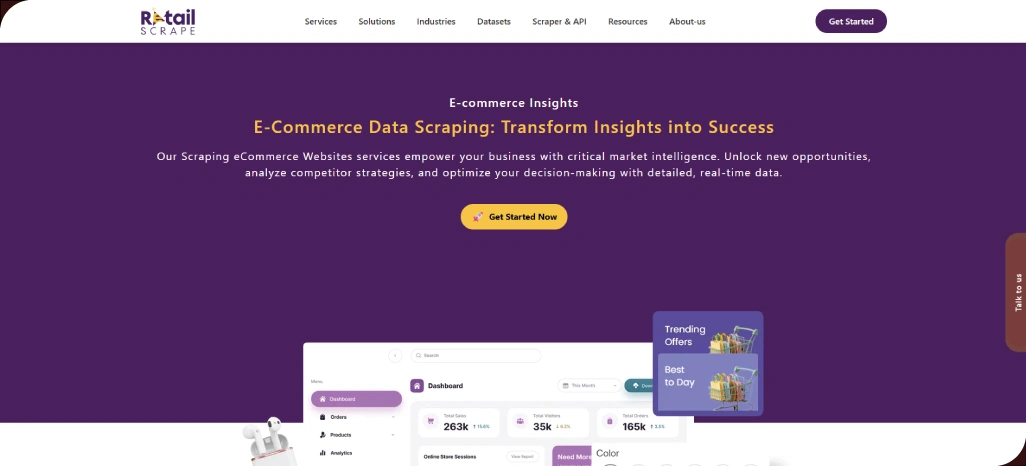
Our expertise in E-Commerce Pricing Intelligence allows businesses to monitor, compare, and analyze delivery charges across Amazon, Flipkart, and Myntra with precision and speed. We focus on providing actionable insights that help you improve delivery pricing strategies and boost profitability.
Our key offerings include:
- Real-time tracking of delivery charges across marketplaces.
- Automated competitor shipping cost comparisons.
- Regional and seasonal delivery price insights.
- Historical trend reports for better forecasting.
- Customized marketplace delivery analytics dashboards.
By integrating our solutions, you can transform raw data into clear, competitive insights. Our tailored approach ensures you benefit from advanced Delivery Charge Tracking Solutions that keep your pricing strategies ahead of the curve.
Conclusion
In the competitive online retail environment, adopting E-Commerce Pricing Intelligence enables businesses to make more informed decisions about delivery cost strategies across Amazon, Flipkart, and Myntra. With accurate insights, you can optimize margins and improve customer satisfaction.
If you’re ready to refine your shipping cost strategy, our team can provide tailored E-Commerce Delivery Price Scraping solutions that deliver real results. Contact Retail Scrape today to get customized reports, real-time monitoring, and expert guidance to stay ahead in the e-commerce marketplace.


